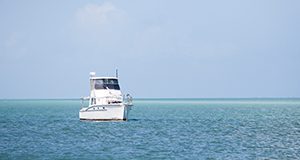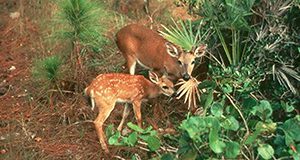This 7-page document is the sixteenth lesson in the Cetaceans 4th Grade Curriculum. It will help students learn why ship strikes are a threat to North Atlantic right whale survival, and what conservation measures are in place to reduce this threat. Written by Maia Patterson McGuire, Jessica Hardy, Brenda Cannaliato, and Ruth Francis-Floyd, and published by the UF/IFAS Veterinary Medicine–Large Animal Clinical Sciences Department, June 2019.
http://edis.ifas.ufl.edu/vm241
Tag: Management and Conservation of Wildlife
Climate Changes, Shifting Ranges: Climate change effects on wildlife in the Florida Everglades and Keys
Where do the animals go when the sea rises? Learn the probable futures of Florida panthers and other south Florida wildlife in this 5-page fact sheet. Written by Larry Perez, James I. Watling, David Bucklin, Mathieu Basille, Frank J. Mazzotti, Stephanie Romañach, and Laura Brandt and published by the UF Department of Wildlife Ecology and Conservation, it explains how a changing climate could impact wild animals.
edis.ifas.ufl.edu/uw428
Climate Change Adaptation: New Perspectives for Natural Resource Management and Conservation (WEC318/UW363)
Climate change is creating new challenges for conservation and management of natural resources. As temperatures, rainfall patterns, and disturbance regimes change and sea levels rise, ecosystems are being transformed. With climate change species and communities may move out of the fixed systems in reserves that were established to protect them, and may not have the needed migration corridors to successfully disperse. The rate at which climate is projected to change in coming decades is likely too fast for many species to genetically adapt or to migrate to new suitable areas. Climate change underscores the need to transform our view of the natural world. While many of our conservation tools and approaches will stay the same, a new perspective will enable us to better apply these tools to meet future challenges. This 3-page fact sheet summarizes recommendations from four recent reviews of the literature on climate change adaptation. Written by Rebecca G. Harvey, Laura A. Brandt, and Frank J. Mazzotti, and published by the UF Department of Wildlife Ecology and Conservation, February 2012.
http://edis.ifas.ufl.edu/uw363
Insecticides and Wildlife (ENY511/IN881)
 When we use chemical insecticides to eliminate problem insects we discover that the effects of insecticides are not always limited to these 6-legged targets. Wildlife, pets, and humans also can be affected by insecticides. So one of the great challenges confronting humans is to develop ways to manage insects without affecting non-target organisms. Learn more in this 16-page fact sheet written by John L. Capinera, and published by the UF Department of Entomology and Nematology, October 2011.
When we use chemical insecticides to eliminate problem insects we discover that the effects of insecticides are not always limited to these 6-legged targets. Wildlife, pets, and humans also can be affected by insecticides. So one of the great challenges confronting humans is to develop ways to manage insects without affecting non-target organisms. Learn more in this 16-page fact sheet written by John L. Capinera, and published by the UF Department of Entomology and Nematology, October 2011.
http://edis.ifas.ufl.edu/in881
Conservation Easements: Options for Preserving Current Land Uses (SSFOR21/FR149)
Many landowners have a strong connection to their land and want to ensure its protection for many generations. Conservation easements can prevent future residential and commercial development of one’s land, and reduce inheritance tax liability for one’s heirs. This 6-page fact sheet will describe conservation easements, what is involved in establishing one, some of the tax implications of such agreements, the government and non-government organizations that commonly participate in conservation easements, and important considerations for landowners before entering into such an agreement. Written by Chris Demers and Douglas R. Carter, and published by the UF School of Forest Resources and Conservation, March 2011.
http://edis.ifas.ufl.edu/fr149

